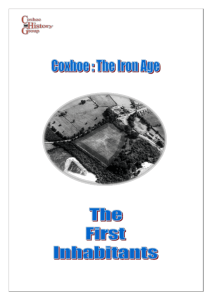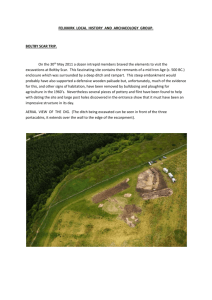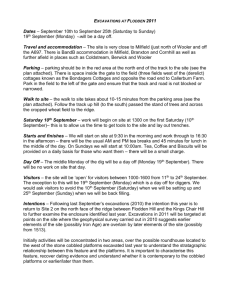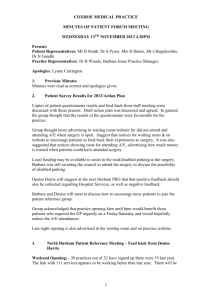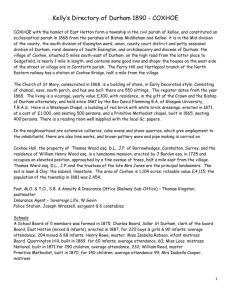Coxhoe. The Beginnings? - Coxhoe Local History Group
advertisement
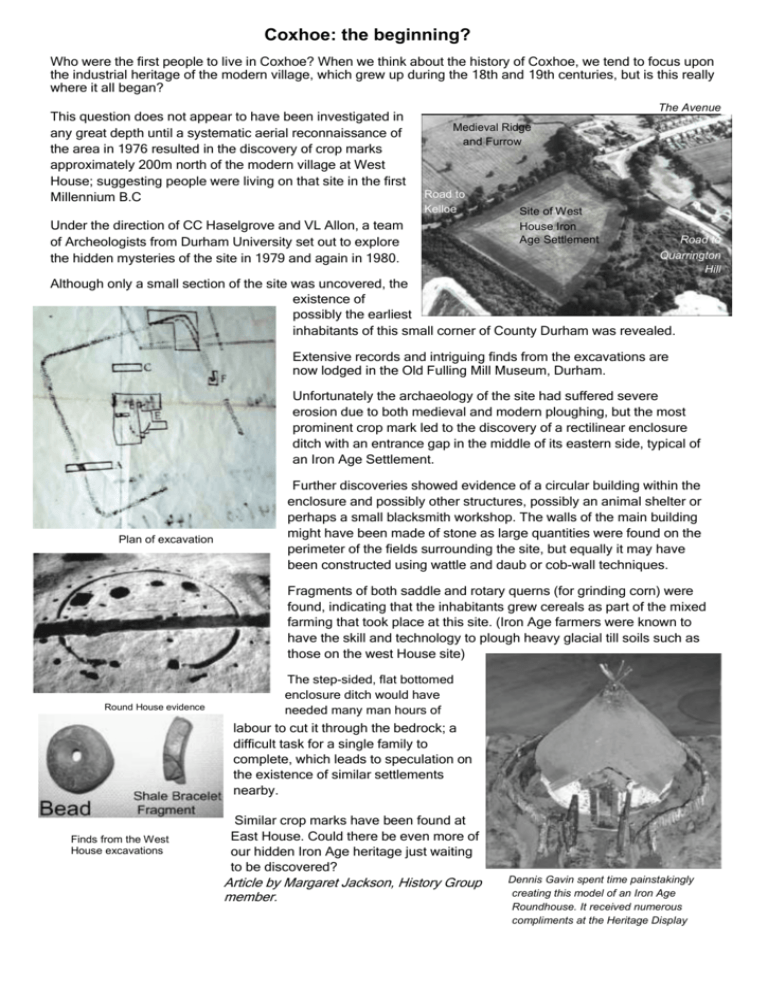
Coxhoe: the beginning? Who were the first people to live in Coxhoe? When we think about the history of Coxhoe, we tend to focus upon the industrial heritage of the modern village, which grew up during the 18th and 19th centuries, but is this really where it all began? This question does not appear to have been investigated in any great depth until a systematic aerial reconnaissance of the area in 1976 resulted in the discovery of crop marks approximately 200m north of the modern village at West House; suggesting people were living on that site in the first Millennium B.C The Avenue Medieval Ridge and Furrow Road to Kelloe Under the direction of CC Haselgrove and VL Allon, a team of Archeologists from Durham University set out to explore the hidden mysteries of the site in 1979 and again in 1980. Site of West House Iron Age Settlement Road to Quarrington Hill Although only a small section of the site was uncovered, the existence of possibly the earliest inhabitants of this small corner of County Durham was revealed. Extensive records and intriguing finds from the excavations are now lodged in the Old Fulling Mill Museum, Durham. Unfortunately the archaeology of the site had suffered severe erosion due to both medieval and modern ploughing, but the most prominent crop mark led to the discovery of a rectilinear enclosure ditch with an entrance gap in the middle of its eastern side, typical of an Iron Age Settlement. Plan of excavation Further discoveries showed evidence of a circular building within the enclosure and possibly other structures, possibly an animal shelter or perhaps a small blacksmith workshop. The walls of the main building might have been made of stone as large quantities were found on the perimeter of the fields surrounding the site, but equally it may have been constructed using wattle and daub or cob-wall techniques. Fragments of both saddle and rotary querns (for grinding corn) were found, indicating that the inhabitants grew cereals as part of the mixed farming that took place at this site. (Iron Age farmers were known to have the skill and technology to plough heavy glacial till soils such as those on the west House site) Round House evidence The step-sided, flat bottomed enclosure ditch would have needed many man hours of labour to cut it through the bedrock; a difficult task for a single family to complete, which leads to speculation on the existence of similar settlements nearby. Finds from the West House excavations Similar crop marks have been found at East House. Could there be even more of our hidden Iron Age heritage just waiting to be discovered? Article by Margaret Jackson, History Group member. Dennis Gavin spent time painstakingly creating this model of an Iron Age Roundhouse. It received numerous compliments at the Heritage Display


